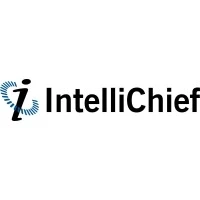In today's fast-paced business environment, organizations are under constant pressure to enhance efficiency, reduce costs, and maintain a competitive edge. One critical strategy to achieve these goals is through effective SAP ECC integration. By seamlessly connecting SAP ECC with other enterprise systems, businesses can streamline operations, improve data accuracy, and foster informed decision-making.
The Imperative for SAP ECC Integration
SAP ECC (ERP Central Component) serves as the backbone for many organizations, managing core processes such as finance, supply chain, human resources, and more. However, to fully leverage its capabilities, SAP ECC must be integrated with other applications like CRM systems, supplier platforms, and third-party tools. This integration ensures real-time data flow, eliminates silos, and enhances overall operational agility.
Navigating Integration Challenges
While the benefits are substantial, integrating SAP ECC is not without its challenges:
1. Complexity of SAP's Proprietary Interfaces
SAP ECC utilizes proprietary technologies such as IDocs, BAPIs, ABAP, and RFCs for integration. These interfaces can be intricate and may not align seamlessly with third-party systems, leading to complex, brittle connections that are difficult to maintain and scale .
2. Customization and Configuration Hurdles
The flexibility of SAP ECC allows for extensive customization to meet specific business needs. However, excessive or inconsistent customizations can complicate integration efforts, increase costs, and hinder future upgrades .
3. Data Migration and Quality Concerns
Migrating data from legacy systems to SAP ECC requires meticulous planning. Inaccurate or incomplete data can lead to operational inefficiencies and decision-making errors .
4. Change Management and User Adoption
Implementing SAP ECC integration often necessitates significant changes in workflows. Without effective change management strategies, organizations may face resistance from employees, leading to reduced productivity and delayed ROI .
Best Practices for Successful Integration
To overcome these challenges, organizations should consider the following best practices:
1. Leverage Middleware Solutions
Implementing middleware platforms like SAP PI/PO can facilitate communication between SAP ECC and other systems, simplifying integration and enhancing scalability .
2. Utilize APIs and Web Services
Employing APIs and web services enables smooth data exchange between SAP ECC and external applications, promoting real-time information flow and process automation .
3. Ensure Data Consistency
Implement data validation and transformation processes to maintain data integrity across integrated systems, minimizing discrepancies and ensuring reliable operations .
4. Plan for Scalability
Design integration solutions with scalability in mind to accommodate future growth and evolving business requirements . sap ecc integration
Real-World Application: IntelliChief's AP Automation
IntelliChief offers an advanced AP Automation solution that exemplifies effective SAP ECC integration. By automating accounts payable processes, IntelliChief reduces manual data entry, eliminates errors, and accelerates cash flow. Its AI-enabled robotic automation seamlessly integrates with SAP ECC, providing real-time information and enhancing decision-making capabilities . sap ecc integration
Conclusion
Effective SAP ECC integration is pivotal for organizations aiming to optimize operations and drive growth. By understanding the challenges and implementing best practices, businesses can unlock the full potential of their SAP ECC systems, leading to improved efficiency, data accuracy, and strategic agility. sap ecc integration

